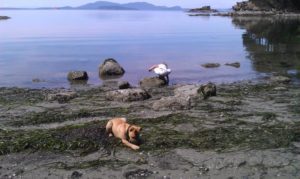This data collection hiatus can cause hiccups.
At the beginning of 2020, we started gearing up for another exciting year of community science with North Sound Stewards. At this time, we also started hearing on the news about a potential outbreak of what could become a world pandemic across the Pacific ocean and thousands of miles away. At the time, it was unclear how exactly this would impact us here in our corner of the Pacifc Northwest. We experienced waves of growing alerts as events became more limited and postponed, and finally to the point where Governor Inslee ordered us all to stay home, only leaving for essential activities. But what does this mean for data collection and citizen science?

Speaking with several other folks we work with to collect data, such as Washington Department of Fish and Wildlife (WDFW) and Department of Natural Resources (DNR), they are largely unable to do field work to collect their own data at this point as it requires that they have more than one set of hands and cannot avoid being less than 6 ft apart. Similarly, a lot of community science has had to be completely put on hold, but does everything have to come to a complete standstill?
Not being able to collect data can be incredibly frustrating. For those who want to use the data, this can create data holes and gaps in our knowledge that we can never get back. For volunteers who are stuck at home right now, many welcome the excuse to be outside and doing something useful for the greater good. With issues of overcrowding our shared outdoor spaces, strict social distancing, and other health precautions in effect, citizen science programs have to be careful about what is encouraged in order to keep everyone safe. The sooner we flatten the curve, the sooner we can resume at least somewhat normal life, right? Then there’s the additional challenge of not knowing how long we will have to postpone, cancel, or restructure data collection events as the cherry on top.
But not all is lost, thanks to you and your smartphone!
True, there is some data that we simply just cannot collect, while there are still some things that we can focus on. For starters, this gives us some more time to dig into the data. Be sure to check back during the summer for more updates on any exciting discoveries we make while delving deeper into the data that’s already been collected. During this pandemic, we are finding all kinds of ways to come together virtually as a community, even if we can’t safely gather in-person. The same is true for the community of community science! Read on for some examples of ways you can still engage in community science. Just be sure to practice proper social distancing, stay local, consider wearing a cloth face mask, and follow all current health and safety guidelines.
Social distancing Community Science ideas
Join a Virtual Cleanup
While we can’t host beach cleanups right now, there’s nothing to stop you from cleaning up while out on your daily walk around your neighborhood! Be sure to stay local, don’t trespass or otherwise go where you’re not allowed, bring some gloves and a bucket or garbage bag, and clean up what you find along streets. If you find anything questionable or unsafe, leave it and maybe consider reporting it on the Water Reporter App (see below). For bonus points, post a photo of it on social media with #VirtualCleanup and challenge a friend! Double bonus points if you record what you find in the Clean Swell App to help track trash globally! Watch Kirsten’s virtual cleanup with her family!
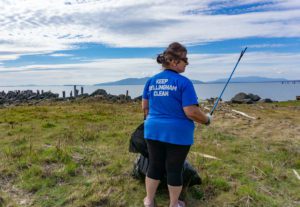
Water Reporter App
Spot pollution while locally exercising with proper social distancing? We would love for you to snap a photo and upload it to the Water Reporter App! Learn more here.
Download on iPhone Download on Android
MyCoast App
Already heading out to the beach? Witness a king tide, storm surge, large marine debris, or creosote? If you have a smartphone, you can report it on the MyCoast App. This data goes on to other agencies who can use it for things like prioritizing where to go next for large marine debris removal. Just be sure that your local beach is open and you practice all the current health and safety guidelines.
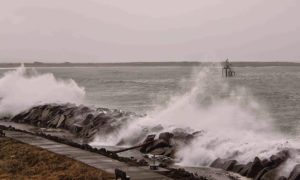
iNaturalist
In a typical year, we would be gearing up for intertidal monitoring. With so much unknown about the future in terms of whether or not we’ll be able to host these surveys as planned, we are looking for alternative ways to gather data on what critters and algae are out there on our beaches by calling upon our community to crowdsource with iNaturalist. The idea is to run this throughout the summer, discouraging crowding the beach, and allowing our community to add to what they see while already out there and sharing it digitally with others to see. In the end, we hope to have a beautiful iNaturalist collection of organisms and comprehensive lists to compare in future years. Learn more.
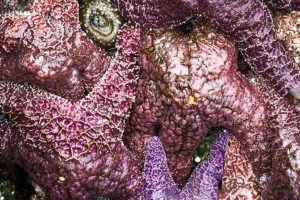
Spot and Report Forage Fish Spawning Events
This year has been a really great year for herring spawn. Washington Department of Fish and Wildlife isn’t able to get out into the field right now, so they appreciate reports from community members who witness these spawning events, often easily identifiable where the water turns white from the spawn and large groups of seabirds gather and start a commotion over trying to gobble up as many eggs as they can. If you observe activity that looks like herring spawn, please take a video and pictures, note the location and date, and send them to Adam Linquist.

Skill Building Opportunities
While we can’t offer in-person trainings, we are offering a variety of webinars to increase your education and awareness so community members can better advocate for the things we’re trying to protect. Some topics include ocean acidification, forage fish, sea star wasting syndrome, and more.
Others
European Green Crab, forage fish, marine bird surveys, COASST surveys and some other community science events are still taking place with modifications to ensure safety. For most of these events, it means that social distancing is maintained while only one or two people collect the data. See our events page for upcoming opportunities.
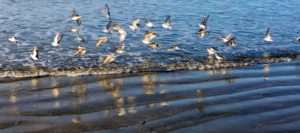
A reminder that most of these activities can be done at any time, even after we’re free again to roam and gather in groups, but now is a great time to start making some of these a habit, like your own cleanups, reporting interesting critters on iNaturalist, and using the Water Reporter App when you spot pollution. When you’re done, share it with your friends and neighbors and challenge them to do the same. Volunteers overwhelmingly state that one of the top reasons they get involved with community science is because they want to meet other like-minded people. Just because we have to keep our distance from one another doesn’t mean we can’t still come together as a community to collect meaningful data. While this version of community may look a little different, it’s still a community banding together to nerd out on barnacles and other nearshore critters. Who knows? You might even find some connections you never thought you’d make.
For questions or more information on how you can get involved with community science locally, please contact Eleanor Hines, Lead Scientist, North Sound Baykeeper at RE Sources.


